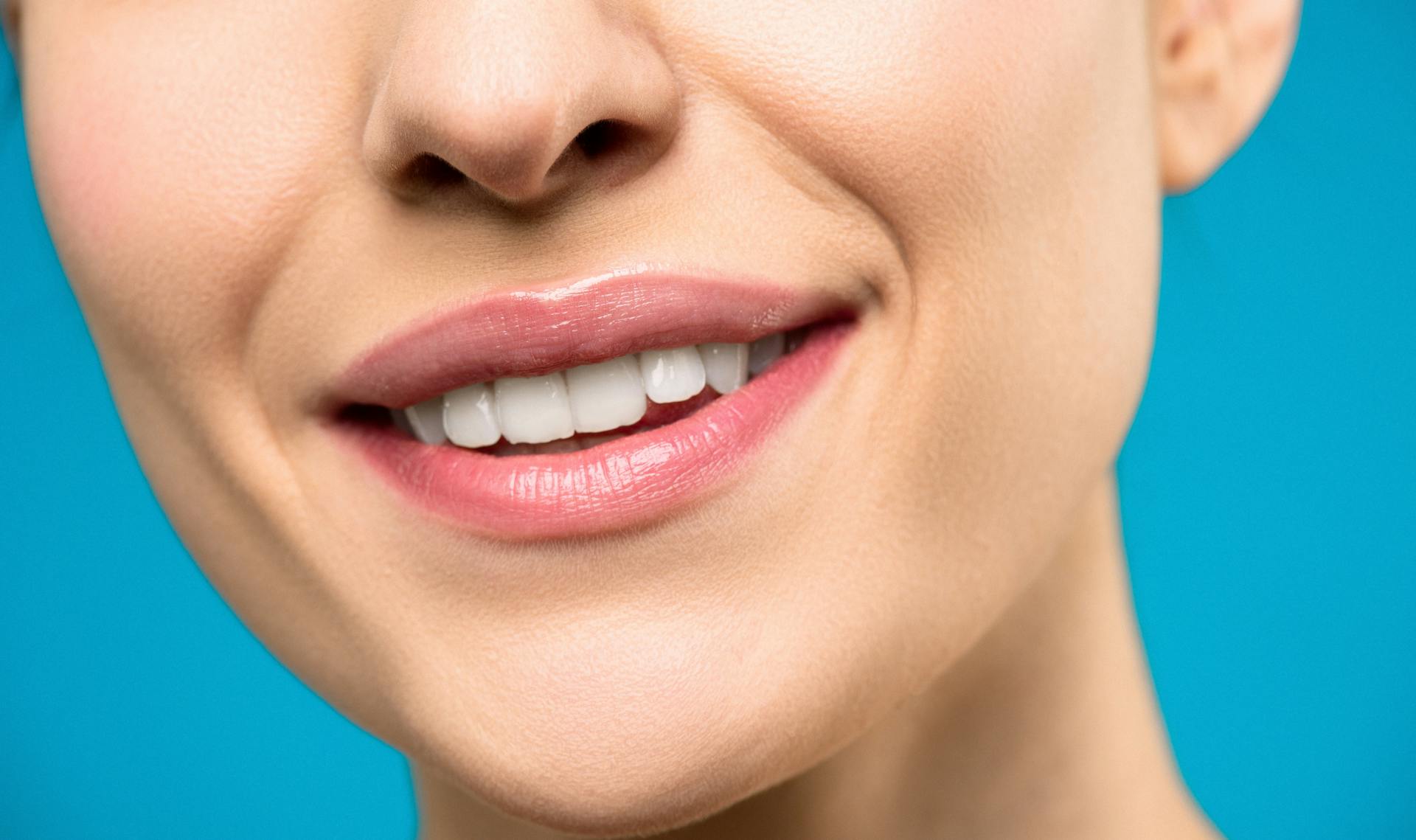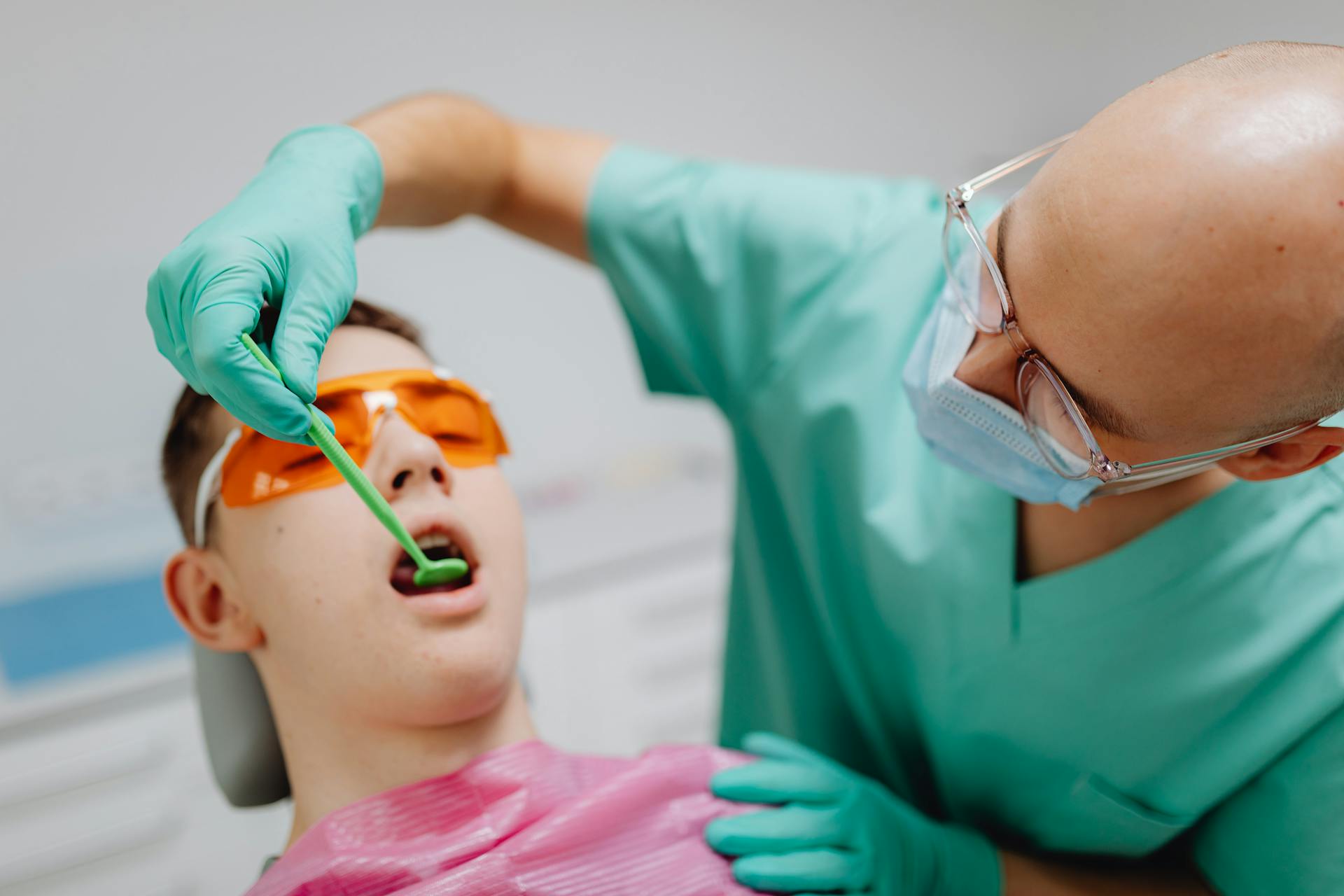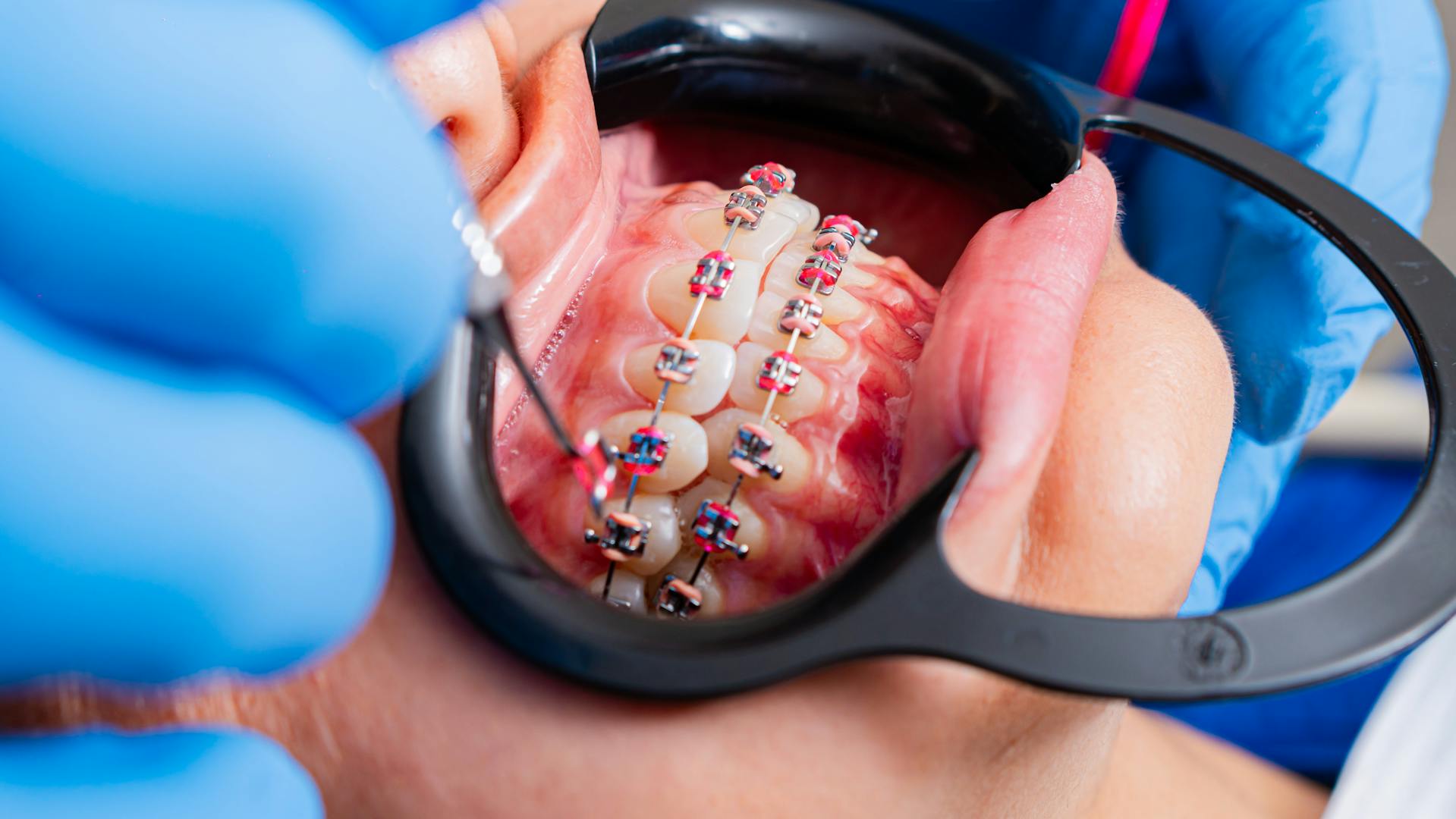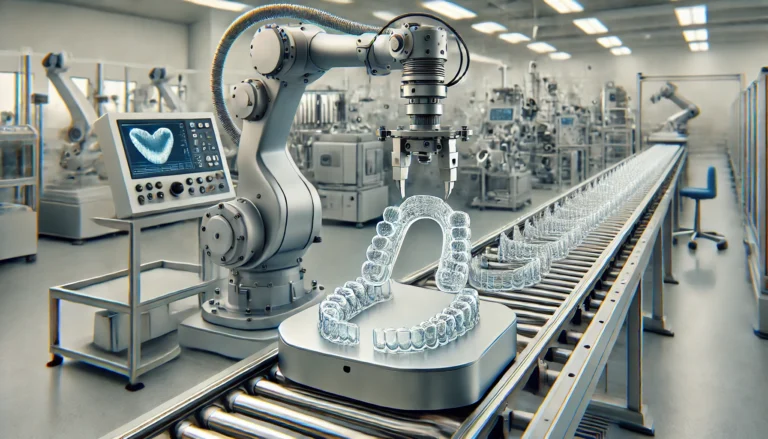
Invisalign has significantly changed the field of orthodontics by providing a contemporary alternative to traditional braces. But does Invisalign work for severe misalignments?
This article will delve into the types of misalignments that Invisalign can correct, highlighting the advantages that make it an attractive option for many individuals. It will also consider the limitations that potential users should be aware of. Additionally, various factors will be discussed to help guide the decision-making process before choosing Invisalign, as well as alternative treatments that may be necessary in certain cases.
Explore whether Invisalign might be the solution you have been seeking.
Can Invisalign Fix Severe Misalignments?

Invisalign is transforming the landscape of orthodontic treatment by providing a contemporary solution for individuals facing severe misalignments, such as malocclusion. Unlike traditional braces, Invisalign employs advanced dental technology to create customised aligners that gradually move teeth into their optimal position.
Each aligner is designed using 3D imaging techniques that guarantee a precise fit, making the process both effective and comfortable for the patient. This innovative method serves as an alternative to conventional braces, enabling individuals to achieve both aesthetic enhancement and improved dental alignment without disrupting their daily lives.
Understanding the mechanics of how Invisalign operates can lead to increased patient satisfaction and notable improvements in oral health.
What Types of Misalignments Can Invisalign Correct?
Invisalign has demonstrated its effectiveness in correcting a range of dental alignment issues, making it a versatile option for individuals with various orthodontic needs. This advanced treatment can successfully address conditions such as crowding, spacing, overbite, underbite, and even crossbite. Additionally, patients with gaps between their teeth can benefit from the clear aligner system.
The adaptability of Invisalign to different orthodontic evaluations underscores its innovative design, which is specifically tailored to meet the unique challenges posed by each patient’s dental structure. Its approach to addressing these common misalignments ensures a personalised treatment plan that aligns with the individual’s dental health objectives.
For example, individuals dealing with crowding often experience relief as the aligners gently shift their teeth into proper positions, creating more space and enhancing overall aesthetics. Spacing issues, which can lead to food accumulation and hygiene challenges, can also be effectively managed with the aligners, resulting in a seamless smile.
Overbites and underbites can cause discomfort and lead to jaw problems; however, many patients report significant relief due to the precise movements facilitated by the aligners. Clinical studies have validated the efficacy of Invisalign in correcting these misalignments, and numerous individuals have shared positive testimonials about their successful journeys. Each treatment not only improves appearance but also contributes to better oral health.
What Are the Advantages of Invisalign for Severe Misalignments?
Invisalign presents several advantages for individuals facing severe misalignments, making it a highly sought-after alternative to traditional braces in contemporary orthodontics.
One of the key benefits is its invisibility; the clear aligners are nearly undetectable, allowing patients to maintain their appearance throughout the treatment process. This discreet option greatly enhances patient compliance, as many individuals feel more confident wearing them.
Furthermore, the comfort aspect is noteworthy, as Invisalign aligners are custom-designed to fit snugly over the teeth, minimising the discomfort often associated with traditional braces.
Overall, these advantages contribute to the treatment’s effectiveness and play a significant role in ensuring patient satisfaction.
1. Discreet Treatment
One of the most notable features of Invisalign is its discreet treatment option, which employs clear aligners that are nearly invisible when worn. This aspect is particularly appealing to adults and teenagers who prefer to avoid the noticeable metal brackets and wires associated with traditional braces.
The clear aligners enable individuals to undergo orthodontic treatment without drawing unnecessary attention to their dental work, allowing them to maintain confidence in both social and professional settings. The aesthetic appeal of Invisalign aligns perfectly with the desire for a beautiful smile while ensuring that one’s appearance is not compromised during the treatment process.
Patients often express their satisfaction with how effortlessly Invisalign integrates into their daily lives, with numerous testimonials highlighting the treatment’s aesthetic benefits. For example, one user noted that they felt more confident during a job interview, while another emphasised that their smiles were consistently ‘camera ready’ at social events.
Unlike traditional braces, which can often create anxiety due to their visibility, Invisalign allows individuals to embrace their ongoing transformations discreetly. This subtle approach not only enhances daily interactions but also encourages a positive outlook on the journey towards achieving a stunning smile.
2. Comfortable and Removable
Invisalign distinguishes itself with its comfortable and removable aligners, which create a more user-friendly orthodontic experience compared to traditional braces.
This flexibility not only enhances oral hygiene practices but also give the power tos individuals to manage their dental care without the hassle of navigating around fixed appliances. The aligners easily fit into everyday routines—whether enjoying a meal with friends or confidently smiling at social events. Such features contribute to greater satisfaction and make treatment goals more attainable.
This innovative approach to orthodontics fosters a positive experience, providing patients with the tools they need to maintain their oral health while feeling comfortable throughout their journey to a straighter smile.
3. Less Time-Consuming
Invisalign treatments are often a more time-efficient option compared to traditional orthodontic methods, making them an appealing choice for individuals seeking effective solutions for significant misalignments. The advanced technology behind Invisalign facilitates quicker treatment timelines, with many patients completing their aligner cycles sooner than they initially anticipated.
Additionally, the reduced need for follow-up appointments helps minimise the time spent in the dental surgery, making it easier for patients to track their progress. This streamlined approach allows individuals to maintain their daily routines while still working towards their orthodontic goals without extended interruptions.
By cutting down on the number of required visits, patients gain greater flexibility, which is particularly advantageous for busy professionals or families with tight schedules. The incorporation of digital monitoring systems allows practitioners to remotely evaluate treatment progress, ensuring timely adjustments and keeping patients informed at each stage of the process.
This proactive approach not only enhances treatment effectiveness but also fosters trust, as patients feel more involved and invested in their orthodontic journey. As a result, this overall experience frequently meets—and even surpasses—patient expectations, leading to higher satisfaction rates throughout the entire process.
What Are the Limitations of Invisalign for Severe Misalignments?

While Invisalign provides numerous advantages, it is important to consider its limitations, particularly for severe misalignments. Not all orthodontic issues can be effectively addressed with Invisalign, which is why a comprehensive evaluation by a qualified orthodontist is crucial to determine the most appropriate treatment plan.
Additionally, the effectiveness of Invisalign greatly depends on patient compliance; patients are expected to wear the aligners for 20 to 22 hours each day to achieve the best possible results. Not adhering to this guideline can result in longer treatment times and may undermine the overall effectiveness of the treatment.
1. May Not Be Suitable for All Cases
One notable limitation of Invisalign is that it may not be suitable for all orthodontic issues, particularly those involving severe misalignments that require more complex treatment solutions.
Some conditions, such as extreme overbites, underbites, or severe crossbites, may necessitate the use of traditional braces or other orthodontic interventions for effective correction. It is essential to seek a professional opinion from an experienced orthodontist to evaluate the specific case, ensuring that patients are guided towards the most effective treatment option based on their unique dental alignment challenges.
For example, patients with severe crowding may discover that Invisalign does not exert enough force to properly reposition their teeth, potentially leading to inadequate results. Case studies indicate that individuals with significant jaw discrepancies often require comprehensive treatment plans that combine both surgical and orthodontic elements, which Invisalign alone cannot adequately address.
Expert orthodontists stress the significance of a thorough clinical examination and advanced imaging to develop tailored treatment approaches. They highlight instances where traditional braces have yielded superior results in complex cases.
Therefore, understanding the specific limitations of clear aligners is crucial for patients, give the power toing them to make informed decisions on their journey to achieving a healthier, more aligned smile.
2. Requires Discipline and Compliance
Invisalign treatment necessitates a significant level of discipline and patient compliance to ensure success. It is important to wear the aligners consistently to achieve the desired results. Patients are generally advised to wear their aligners for 20 to 22 hours each day and to switch to the next set of aligners according to the prescribed schedule.
This consistency is crucial for effective tooth movement and reaching treatment goals. Not adhering to these guidelines can result in extended treatment durations and dissatisfaction with the final outcomes. Therefore, it is essential for patients to follow their prescribed treatment plan closely.
To encourage this level of discipline, individuals undergoing treatment should prioritise proper oral hygiene. Clean aligners enhance comfort and contribute to overall dental health. Regular brushing and flossing should be integrated into the daily routine to ensure food particles do not compromise the aligners. Utilising a calendar or setting reminders for aligner changes can greatly improve adherence.
The role of orthodontists is equally important in this process. They provide guidance and support throughout the treatment journey, offering personalised advice and motivation that can give the power to patients to stay committed to their oral care regimen and aligner usage.
3. May Not Be Covered by Insurance
One important factor for patients considering this treatment is the potential cost of Invisalign, as dental insurance policies may not entirely cover the treatment. Unlike traditional braces, which often have more comprehensive insurance coverage due to their long-standing presence in orthodontics, Invisalign is still viewed as a relatively new option. This can lead to varying levels of coverage across different insurance plans.
Therefore, it is crucial for patients to thoroughly review their dental insurance benefits and take into account any out-of-pocket expenses when evaluating Invisalign as a solution for significant misalignments.
The overall financial commitment can vary widely based on the complexity of the individual case and the duration of treatment. Many dental practices offer payment plans or financing options that allow patients to distribute the cost over time, which can help ease any financial burden.
Additionally, some organizations provide financial assistance specifically for orthodontic treatments, serving as a valuable resource. It is essential for patients to explore these options and engage in open discussions with their orthodontist to create a customised payment strategy that fits their financial circumstances.
Is Invisalign the Right Choice for Severe Misalignments?
Determining whether Invisalign is the appropriate choice for severe misalignments requires thoughtful consideration of several factors, such as treatment effectiveness and individual preferences.
An orthodontic assessment plays a crucial role in assessing specific needs, as each case presents unique challenges that call for customised solutions.
Patients should also reflect on their lifestyle, comfort level with aligners, and their commitment to adhering to the treatment plan throughout its duration.
Ultimately, a personalised treatment plan that aligns with the patient’s goals and dental health needs will be key in guiding the decision-making process regarding the suitability of Invisalign.
What Factors Should Be Considered Before Choosing Invisalign?
Before selecting Invisalign, it is important to consider several key factors to ensure that the treatment aligns with the patient’s expectations and dental health goals.
Firstly, evaluating the specific orthodontic issues is crucial, as certain conditions may respond more effectively to alternative treatments. It is also essential to understand the level of commitment required for compliance, which includes wearing the aligners as directed and maintaining proper oral hygiene. This diligence is vital for achieving the desired outcomes. Additionally, patients should think about the treatment timeline and any lifestyle adjustments that may be necessary throughout the process.
Discussing individual treatment goals with an orthodontist is essential, as these goals can significantly influence the approach taken. For example, someone seeking rapid results may have different options from someone whose primary concern is comfort.
Moreover, potential lifestyle changes, such as dietary restrictions during treatment or adapting to wearing aligners in social situations or during physical activities, should be carefully considered.
Real-life examples show that patients who actively engage in their treatment plans tend to report smoother experiences and more satisfying results. This reinforces the importance of patient education and self-motivation throughout this transformative journey.
What Are the Alternatives to Invisalign for Severe Misalignments?

While Invisalign is certainly a well-regarded option for addressing severe misalignments, there are several effective alternatives available in the field of orthodontics. Each option presents unique advantages and may be more appropriate for specific dental alignment challenges.
For instance, traditional braces offer comprehensive support for complex cases and are often preferred by orthodontists due to their proven effectiveness.
Other alternatives include:
- Lingual braces, which are placed behind the teeth for a more discreet appearance.
- Clear aligners that function similarly to Invisalign but come from different manufacturers.
Additionally, veneers can address certain cosmetic concerns, making them a viable choice for some patients.
1. Traditional Braces
Traditional braces are still regarded as one of the most effective solutions for treating severe misalignments. They offer comprehensive orthodontic treatment through the use of brackets and wires. These devices apply consistent pressure to the teeth, gradually guiding them into their desired positions over time.
Given their proven effectiveness in addressing a wide range of orthodontic issues, dental professionals often recommend traditional braces for patients with complex cases that Invisalign may not adequately resolve. While they may not have the aesthetic appeal of clear aligners, the results they deliver make them a reliable choice for many individuals.
Orthodontists highlight their capability to tackle various conditions, such as overcrowding and bite problems, with precision and reliability. Patients frequently appreciate that traditional braces can effectively manage severe discrepancies that require more than just minor adjustments.
It is important to recognise some limitations associated with traditional braces, such as potential discomfort during initial adjustments and restrictions on certain foods. Many individuals also notice a learning curve when it comes to maintaining oral hygiene, as braces can complicate brushing and flossing efforts.
Despite these challenges, the comprehensive approach to orthodontic care offered by traditional braces continues to earn the trust of both patients and professionals.
2. Lingual Braces
Lingual braces present a discreet alternative to traditional braces, as they are positioned on the back of the teeth, rendering them virtually invisible from the front. This aesthetic advantage appeals to individuals seeking effective orthodontic treatment without the conspicuous appearance of conventional braces.
Along with their hidden placement, lingual braces offer a customised fit, tailored specifically to each patient’s dental structure, which can enhance both comfort and effectiveness. Their unique design facilitates precise tooth movement, making them a suitable option for individuals with significant misalignments, much like traditional braces.
However, when compared to Invisalign, lingual braces may present challenges related to speech and the maintenance of oral hygiene due to their positioning. While patients often appreciate that lingual braces can achieve similar results, it is essential to consider these factors alongside the convenience and removability offered by aligners.
Ultimately, taking the time to thoroughly evaluate personal lifestyle and dental needs will aid in making the most informed orthodontic choice.
3. Clear Aligners
Clear aligners, much like Invisalign, provide an alternative approach to orthodontic treatment that emphasises comfort and aesthetics. These aligners are designed to be removable, which allows patients to easily maintain their oral hygiene routines.
While they share some similarities with Invisalign regarding aesthetics and comfort, it is crucial to consult with a dental professional to evaluate their effectiveness for specific cases of severe misalignments. Depending on the orthodontic issues present, these aligners can serve as a viable solution in various situations.
One of the advantages of clear aligners is that they typically allow for easier meal consumption without dietary restrictions. Since they can be removed, patients can enjoy a wide variety of foods without the worry of damaging brackets.
However, it is important to recognise that while clear aligners can effectively address mild to moderate misalignments, individuals with severe orthodontic challenges may need to consider more traditional braces.
This highlights the necessity of tailored professional guidance. An orthodontist can assess the severity of misalignment and recommend the most appropriate treatment, ensuring that patients achieve optimal results while also maintaining their overall dental health.
4. Veneers
Veneers have become a popular choice in cosmetic dentistry, primarily for enhancing smiles rather than serving as a traditional orthodontic treatment. These thin shells, made from porcelain or composite resin, are custom-designed to cover the front surfaces of teeth, improving their appearance and masking minor alignment issues.
While veneers can certainly boost aesthetic appeal, it is important to recognise that they do not provide a direct solution for severe misalignments and may not address underlying orthodontic concerns. Consequently, patients should be well-informed about their limitations when it comes to overall dental health.
Often, individuals are attracted to the immediate visual improvements that veneers provide, such as whitening discoloured teeth or concealing chips and gaps. However, it is crucial to understand that these enhancements should ideally fit into a broader dental strategy that addresses any existing alignment challenges.
Veneers may be most beneficial for those with relatively straight teeth who wish to correct minor imperfections or discolouration, rather than for individuals facing significant orthodontic issues. Consulting with a dental professional is essential to determine when veneers are appropriate, ensuring that both aesthetic goals and underlying dental health needs are adequately addressed.
Frequently Asked Questions
Does Invisalign Work for Severe Misalignments?
Yes, Invisalign can effectively treat severe misalignments in both adults and teens.
What is considered a severe misalignment?
A severe misalignment refers to cases where the teeth are significantly crooked, crowded, or spaced, and may also involve bite issues such as overbite, underbite, or crossbite.
Can Invisalign fix severe overbite or underbite?
Yes, Invisalign can effectively correct both overbite and underbite issues in severe cases. However, the severity of the misalignment may impact the treatment timeline and the number of aligners required.
Is Invisalign more effective than traditional braces for severe misalignments?
Invisalign and traditional braces can both effectively treat severe misalignments. However, Invisalign is often preferred for its discreet appearance and comfort.
Will I need to wear Invisalign for a longer time if my misalignment is severe?
The treatment time for Invisalign is determined by the complexity of the case and the severity of the misalignment. The length of treatment may vary, but it is usually comparable to traditional braces.
Are there any limitations for severe misalignments with Invisalign?
Invisalign can effectively treat a wide range of misalignments, but in some rare cases, traditional braces may be a more suitable option. Your orthodontist will assess your case and recommend the best treatment plan for your specific needs.





